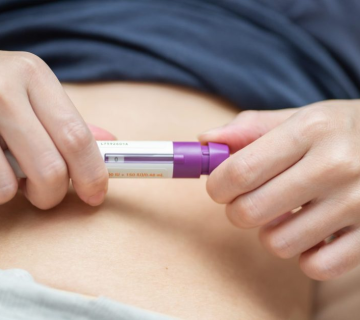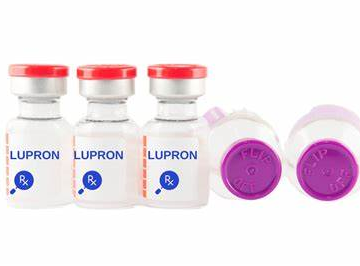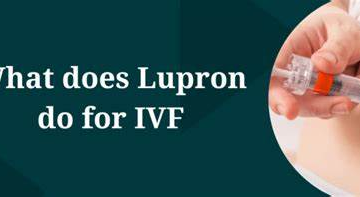
Fertility Massage for Blocked Fallopian Tubes: Can It Help?
If you’re trying to get pregnant and struggling with blocked fallopian tubes, you’ve probably heard about fertility massage. It’s a natural approach that’s gained a lot of buzz lately, with some women swearing it helped them conceive. But does it really work? In this deep dive, we’ll explore what fertility massage is, how it might help with blocked fallopian tubes, what science says about it, and how you can try it yourself. We’ll also look at other natural options, when to see a doctor, and real stories from women who’ve been there. By the end, you’ll have everything you need to decide if fertility massage could be part of your fertility journey.
Understanding Fallopian Tubes
Before we jump into fertility massage, let’s get clear on what fallopian tubes are and why they matter so much for getting pregnant.
What Are Fallopian Tubes?
Think of your fallopian tubes as tiny tunnels—each about the width of a strand of spaghetti—connecting your ovaries to your uterus. Every month, when you ovulate, an egg pops out of one of your ovaries and slides into the fallopian tube. This is where it meets up with sperm for fertilization. If everything goes right, the fertilized egg travels down the tube to the uterus, where it implants and grows into a baby.
It’s like a highway for the egg and sperm to meet. If the road’s open, traffic flows smoothly. But if there’s a roadblock—say, a blockage in the tube—that meeting can’t happen, and pregnancy becomes a challenge.
Causes of Blocked Fallopian Tubes
Blocked fallopian tubes are a big deal in infertility, affecting about 1 in 3 women who can’t conceive. So, what causes these blockages? Here are the main culprits:
-
- Infections: Pelvic inflammatory disease (PID), often triggered by sexually transmitted infections like chlamydia or gonorrhea, can scar the tubes over time.
-
- Endometriosis: This condition happens when tissue like the lining of your uterus grows outside it, sometimes gumming up or blocking the fallopian tubes.
-
- Surgical Scars: If you’ve had surgery—like for an ectopic pregnancy or to remove fibroids—scar tissue can form and clog the tubes.
-
- Other Causes: Less common issues, like pelvic tuberculosis or birth defects, can also play a role.
Each of these can create a barrier, stopping the egg and sperm from doing their thing.
Symptoms and Diagnosis
Here’s the sneaky part: blocked fallopian tubes don’t always wave a red flag. Many women have no clue they’re blocked until they try to get pregnant and it doesn’t happen. Occasionally, if fluid builds up in the tube (a condition called hydrosalpinx), you might feel mild pain on one side of your lower belly.
To find out for sure, doctors use tests like:
-
- Hysterosalpingogram (HSG): They inject dye into your uterus and take an X-ray. If the dye flows through the tubes, they’re clear. If it stops, there’s a block.
-
- Laparoscopy: A small camera goes in through a tiny cut near your belly button to peek at the tubes directly.
-
- Ultrasound: This can sometimes spot fluid-filled tubes, but it’s not as precise as the others.
If you’ve been trying to conceive for a year (or six months if you’re over 35) with no luck, ask your doctor about these tests. Knowing what’s going on is the first step.
What Is Fertility Massage?
Now that we’ve got the basics of fallopian tubes down, let’s talk about fertility massage—a natural therapy some women use to boost their reproductive health, especially when blocked tubes are the issue.
Definition and Types
Fertility massage is all about using gentle, targeted massage to support your reproductive organs. It usually focuses on your belly and pelvic area, aiming to boost blood flow, ease tension, and maybe even break up scar tissue. There are a few flavors of it:
-
- Abdominal Massage: A broad massage of your lower belly to get blood moving to your uterus and ovaries.
-
- Maya Abdominal Massage: A traditional method from Central America that repositions your uterus and improves circulation.
-
- Self-Fertility Massage: Simple techniques you can do at home to help yourself.
-
- Clear Passage Therapy: A specialized approach that claims to open blocked tubes with hands-on techniques (we’ll dig into this later).
The idea is to give your reproductive system a little TLC, naturally.
How It Works
So, how’s it supposed to help with blocked fallopian tubes? The theory is that massaging your belly increases blood flow to the area, which could reduce inflammation or loosen up adhesions—those sticky bits of scar tissue that might be clogging your tubes. Some say it can even help your tubes work better by making them more flexible.
Imagine your fallopian tubes like a garden hose. If there’s a kink or a clog, water can’t flow. Fertility massage is like gently unkinking the hose or flushing out the gunk, hoping to get things moving again. But—and this is a big but—there’s not a ton of hard proof it works that way. A lot of the hype comes from women’s personal stories rather than lab results.
Scientific Evidence: Does Fertility Massage Work?
This is the million-dollar question: can fertility massage really unblock fallopian tubes? Let’s break down what the research says—and what it doesn’t.
Studies Supporting Fertility Massage
There’s some hopeful data out there. Take the Clear Passage therapy, for example. It’s a hands-on method where therapists massage your pelvic area to break up adhesions. A study published in Alternative Therapies in Health and Medicine followed women with blocked tubes who tried it. The results? About 61% of those with completely blocked tubes got pregnant naturally after the therapy. That’s a big deal if it holds up.
Another small study found that 57% of women with blocked tubes conceived after pelvic massage, compared to the 22-34% success rate of surgery. Pretty encouraging, right?
Skepticism and Limitations
But here’s where the brakes come on. Many doctors aren’t sold yet, and here’s why:
-
- Small Studies: Most research on fertility massage involves just a handful of women—not enough to say it works for everyone.
-
- No Randomized Trials: The gold standard in science is a randomized controlled trial (RCT). That’s when researchers split people into two groups—one gets the treatment, the other doesn’t—and compare the results. Without RCTs, it’s hard to know if massage is the real hero or if something else (like timing or luck) is at play.
-
- Expert Doubts: Dr. Joel Batzofin, a fertility expert, has said that without bigger, better studies, we can’t be sure massage works. He thinks it might help in specific cases—like blockages from mucus—but it’s not a fix for everything.
So, the science is a mixed bag. There’s promise, but not enough proof to call it a slam dunk. If you’re thinking about trying it, it’s smart to weigh the hope against the uncertainty.
Practical Steps: Trying Fertility Massage
Ready to give fertility massage a shot? You’ve got two options: do it yourself at home or find a pro. Here’s how to get started.
Self-Fertility Massage Techniques
Self-fertility massage is an easy, low-cost way to dip your toes in. It’s all about gentle moves to boost circulation and relax your belly. Here’s a step-by-step guide:
-
- Get Comfy: Lie on your back with your knees bent and feet flat, or sit up if that feels better.
-
- Warm Up: Rub your hands together or use a dab of massage oil (like coconut or almond) to make it smooth.
-
- Massage Your Belly: Start just above your pubic bone. Use your fingertips to make small, clockwise circles. Go slow and light—think soothing, not digging.
-
- Hit the Ovary Spots: Move to the sides of your lower belly, near where your ovaries sit (just inside your hip bones). Massage gently here too.
-
- Work Your Thighs: Lightly knead the tops of your thighs to get blood flowing to your pelvis.
-
- Breathe Deep: Take slow breaths to stay relaxed while you massage.
✔️ Do:
-
- Try it daily from the end of your period to ovulation (about days 5-14 of your cycle).
-
- Keep it gentle—less is more.
-
- Stop if it hurts or feels off.
❌ Don’t:
-
- Massage during your period or if you might be pregnant.
-
- Push too hard—you’re not kneading dough!
-
- Expect miracles overnight. It takes time.
Aim for 10-15 minutes a day. Some women say they feel looser or less bloated after a few weeks, but results vary.
Finding a Professional
If DIY isn’t your thing, a trained therapist can take it up a notch. Look for someone certified in fertility massage, like Maya Abdominal Massage or Clear Passage therapy. Here’s what to expect:
-
- Chat First: They’ll ask about your fertility struggles and health history.
-
- The Session: You’ll lie down while they use firm but gentle pressure on your belly and pelvis. It might feel weird but shouldn’t hurt.
-
- Time and Cost: Sessions run 30-60 minutes and might cost $50-$150 each. You may need several visits.
Tips for Finding a Pro:
-
- Search online for “fertility massage therapist near me” or ask your doctor for a referral.
-
- Check their creds—look for training in reproductive health massage.
-
- Ask what to expect so you’re not caught off guard.
Either way—DIY or pro—it’s a low-risk option worth trying if you’re into natural approaches.
Other Natural Treatments for Blocked Fallopian Tubes
Fertility massage isn’t the only game in town. Lots of women mix and match natural remedies to tackle blocked tubes. Here’s a rundown of other popular options, with a reality check on what they can (and can’t) do.
Herbal Remedies
Herbs have been used for centuries to support women’s health. Some that pop up for blocked tubes include:
-
- Mugwort: Often burned near the skin (called moxibustion) in Chinese medicine to boost circulation.
-
- Dong Quai: A go-to herb for reproductive issues, thought to balance hormones.
-
- Red Clover: Packed with plant compounds that might mimic estrogen.
The Catch: There’s no solid proof these herbs unblock tubes. They might help your body feel better overall, but don’t bank on them as a cure. Talk to a doctor or herbalist before diving in, especially if you’re on meds.
Castor Oil Packs
Castor oil packs are a classic home remedy. The idea? Slather castor oil on your belly, cover it with a cloth and heat, and let it soak in to reduce inflammation.
How to Do It:
-
- Soak a flannel cloth in castor oil (about 2-3 tablespoons).
-
- Lay it on your lower belly.
-
- Cover with plastic wrap and a heating pad or hot water bottle.
-
- Relax for 20-30 minutes, then wipe off.
Does It Work? Some women love the warm, cozy vibe and say it eases cramps or bloating. Scientifically, though, there’s no evidence it clears blockages. It’s safe to try, just don’t expect miracles.
Dietary Changes
What you eat matters for fertility, even if it won’t directly unblock tubes. A solid diet can set the stage for a healthier reproductive system. Try these:
-
- Antioxidants: Load up on blueberries, spinach, and walnuts to fight inflammation.
-
- Omega-3s: Fish like salmon or chia seeds can balance hormones.
-
- Vitamin C: Oranges, peppers, and strawberries help repair tissues and boost immunity.
Quick Tip: Cut back on processed junk—think chips and soda—and focus on whole foods. It’s not a fix for blockages, but it can’t hurt.
| Treatment | What It Does | Evidence? | Try It? |
|---|---|---|---|
| Herbal Remedies | May support hormone balance | Little to none | With a pro’s OK |
| Castor Oil Packs | Might reduce inflammation | Anecdotal only | Low risk, why not |
| Dietary Changes | Boosts overall health | Solid for general | Yes, always smart |
These options can complement fertility massage, but none are proven tube-openers. Keep your expectations in check.
When to Seek Medical Advice
Natural stuff is great, but it’s not always enough. Here’s how to know when to call in the pros.
Limitations of Natural Treatments
If your tubes are fully blocked—say, from thick scar tissue or a big buildup of fluid—massage or herbs probably won’t cut it. Natural methods might help with mild issues or support your body, but severe blockages often need more firepower.
Red Flags to Watch:
-
- You’ve been trying to conceive for 12 months (or 6 if you’re over 35) with no success.
-
- You’ve had pelvic infections, endometriosis, or surgeries in the past.
-
- You’re feeling pain that’s not normal—like sharp stabs or constant aches.
If any of these sound like you, don’t wait—talk to your doctor.
Medical Treatments for Blocked Fallopian Tubes
When natural routes hit a wall, medical options step in. Here’s what’s out there:
-
- Tubal Surgery: Doctors can remove blockages or repair tubes. It works best for mild scarring, with pregnancy rates around 20-60% depending on the damage.
-
- IVF (In Vitro Fertilization): This skips the tubes entirely. Eggs are taken out, fertilized in a lab, and placed in your uterus. It’s pricier (think $15,000+ per cycle), but success rates can hit 40% or more for women under 35.
Your doc will weigh your age, health, and blockage type to pick the best path. Surgery might fix the tubes; IVF bypasses them. Both beat waiting on a maybe.
Success Stories and Testimonials
Science aside, real stories can light a spark of hope. Here are a couple:
-
- Pamela’s Journey: Pamela Soto told Fox News she faced blocked tubes and was told surgery or IVF were her only shots. She tried Clear Passage therapy instead and got pregnant eight months later—no scalpels needed.
-
- The Numbers: Clear Passage claims over 1,000 babies born to women who’d been written off as “infertile” due to blocked tubes. That’s a lot of happy endings.
These tales are inspiring, but they’re not guarantees. Everyone’s body is different—what clicks for one might flop for another. Still, they show fertility massage isn’t just hype for some.
FAQs About Fertility Massage and Blocked Fallopian Tubes
Got questions? We’ve got answers. Here are the ones women ask most:
Q: Can fertility massage really unblock my tubes?
A: Maybe. Small studies and stories say yes for some, especially if adhesions are the issue. But big research hasn’t confirmed it yet.
Q: How often should I do self-massage?
A: Daily, from post-period to ovulation (days 5-14). Skip it during your period or if you might be pregnant.
Q: Is it safe?
A: Yup, if you’re gentle. Stop if it hurts, and check with your doc if you’ve got health conditions.
Q: Can I mix it with IVF?
A: Ask your fertility specialist. Some say no during egg retrieval or transfer, but it might be fine at other times.
Q: How long until I see results?
A: Tough to say. Some feel better in weeks; others take months. It’s not a quick fix.
Conclusion
Fertility massage for blocked fallopian tubes is a natural option that’s caught a lot of attention—and for good reason. It’s low-risk, easy to try, and has some promising stories and studies behind it. Could it unblock your tubes? Possibly, especially if scar tissue or poor circulation is the problem. But the science isn’t rock-solid yet, so it’s not a sure bet.
What’s clear is this: it’s worth a look if you’re into natural remedies. Pair it with a healthy diet, maybe some castor oil packs, and regular check-ins with your doctor. If it doesn’t work, medical options like surgery or IVF are there to back you up.
Your fertility journey is yours alone. Explore, ask questions, and don’t give up. Whether fertility massage becomes your secret weapon or just a relaxing sidestep, you’re taking charge—and that’s what counts.
Share Your Story
Have you tried fertility massage or another natural trick for blocked fallopian tubes? Did it work—or not? Drop your story in the comments below! Or, if you’ve got questions, fire away. Your experience could be the boost someone else needs today.




No comment